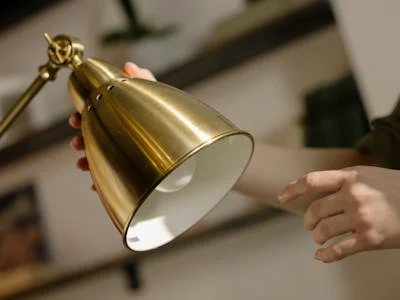Brass Cleaning Machines
Uses Of Brass: Brass is used heavily from the electronic industry to musical instruments, home décor and plumbing. Unfortunately, brass can patinate due to corrosion or the accumulation of dirt over time, which detracts from its appearance and billows. That’s brass cleaning machines have just to deal with it. Brass polishing machines have were designed to return brass back into effect, and to benefit prepare this method as efficient as possible the cleaning agent for supply is everything. In this article we will discuss the types of cleaning agents available in brass cleaning machines, their purpose and how to select one that suits your requirement.
Categories of Brass Cleaner Machines
Now that we know what kind of cleaning agents are there, let us understand the various types of brass cleaning machine. These are broadly classified into the following types of machines:
-
Ultrasonic Brass Cleaners
Ultrasonic brass cleaning machine work on the principle of creating high-frequency sound waves that generate bubbles in a solvent. On contact with the brass, these bubbles implode, cleaning dirt, grease and tarnish.
-
Tumble Brass Cleaners
These mechanical tumblers are used to clean brass items. The components put into a rotating drum with abrasive matter or cleaning agents. This motion lightly brushes along the brass to remove dirt and discolouration.
-
Vibratory Brass Cleaners
Like tumblers, vibratory cleaners use vibrations to jostle brass and cleaning media. They are better to get into the small details and edges of brass stuff.
-
Steam Cleaning Machines
Steam cleaners blast high-temperature steam at the surface of your brass, helping to dissolve dirt and grime. Despite having no commercial cleaning agents included in them, they can do well for light tarnish and base metal cleaning.
The use of particular cleaning agents for each of these machines can improve their performance, resulting in more efficient results.
Detergents in Brass Cleaning Devices
Brass cleaning machines are highly effective, but this is due to the addition of a few cleaning agents. With the right agent, dirt, tarnish and oxidation can be easily broken down but without harming the brass material. Let us examine more the most common cleaning agents:
Cleaning agents based on Alkaline
These particular agents are most commonly used because they assist in breaking down oily, greasy and tarnishing material. Alkaline cleaners are usually sodium hydroxide or potassium hydroxide and work by neutralizing acidic substances from the brass surface.
Benefits:
- Great for removing oils and oily residues.
- When paired with the appropriate solution, it can be successful in stripping tarnish and oxidation.
Acidic Cleaning Agents
When there are heavy oxidation or mineral deposits on brass, acid-based cleaning agents like citric acid, hydrochloric or sulfuric acids are used. These agents assists to dissolve the corrosion and expose the underlying area of brass.
Benefits:
- The best one for removing corrosion, and heavy tarnish.
- Diluted correctly, they can give a deep clean and do not harm the brass.
Citrus-Based Cleaners
Eco-friendly brass cleaning machines often use citrus cleaners, which are made fromnatural acids such as lemon or orange extract. They provide a milder alternative for cleaning without aggressive chemicals.
Benefits:
- Non-toxic and biodegradable.
- Softens brass but still works on light tarnish.
- More pleasantly smelling than chemical cleaners.
Solvent-Based Cleaners
These types of cleaners will eliminate grease, oils and other unsightly contaminants from brass. Acetone or isopropyl alcohol can cut through really strong oils and greases that some other types of cleaners may not be able to work on.
Benefits:
- Rapid, efficient removal of oil-based contaminants
- Perfectly cleaning precision components in industrial settings
Phosphoric Acid Based Cleaners
Phosphoric acid is another strong cleaner that will aid in the removal of rust and oxidation from brass. This is particularly useful in industrial applications where performance cleaning is required.
Benefits:
- Heavy Grit Rust and Corrosion Remover.
- Cleans brass in preparation for things like polishing or plating.
Non-Acidic Abrasive Cleaners
They are generally used in machines such as tumbler or vibratory cleaner. They have gentle abrasive particles that scour away tarnish and dirt but do not scratch the brass. This type of cleaner comes in either a powder or paste.
Benefits:
- Offers a safer approach to cleansing.
- Correct And Appropriate For Brass Articles Jeweled Or Delicate
Working of Cleaning Agents in Brass Cleaning Machines
The secret to achieving the best brass cleaning machine result is knowing how cleaning agents work. Now, let us decompose how these agents work on different kinds of engines:
-
Ultrasonic Cleaners
Ultrasonic purifying machines produce a compound, which is water combined with the purifying agents. Ultrasonic waves produce powerful sound waves that form tiny bubbles. Upon hitting the brass, these bubbles implode, and literally blast off bits of dirt and tarnish. The cleaned acts as a solvent to disintegrate the oils and oxidization, which expands the cavitation effect.
-
Tumble and Vibratory Cleaners
These are machines that use mechanical agitation to clean brass components. These machines use abrasive media with alkaline or acidic cleaners. The abrasives are scrubbing the brass, and the cleaning solution is working to loosen up any grease still clinging on, or tarnish/oxidization.
-
Steam Cleaners
Although steam cleaners are not chemical based, a mild acidic cleaner can be added to further the effect of the steam. The steam does not only cook the tarnish but the vaporized acid aids in breaking up that tarnish into more manageable pieces.
Selecting the Proper Cleaning Agent with Brass Oiling Machines

Not only is it vital to use the correct cleaning agent for successful cleaning, but an inappropriately-selected one can also do more harm than good. Below are a few considerations on how to choose a cleaner for your brass cleaning machine:
-
Type of Tarnish or Oxidation
In case your brass is heavily tarnished or oxidized, an acid cleaner could be needed to dissolve the corrosion. For lighter tarnish, a citrus-based or alkaline cleaner may be all you need.
-
Environmental Impact
If choosing biodegradable and non-toxic options, eco-friendly cleaners are usually your best bet. For this, citrus-based cleaners work the best.
-
Cleaning Machine Type
Some man made cleasning reps operate for distinct devices. As an example, ultrasonic cleaners respond well to mild detergent solutions whilst vibratory cleaners are best suited with abrasive media associated with alkaline agents.
-
Cost and Availability
Economical Ask about the cost of the cleaning agents. Although industrial-grade cleaners can come in at a higher price point they may be more effective for high-volume cleaning.
How to clean brass properly

Here are some suggestions to produce effective results using these machines for The cleaning of brass:
-
Use Proper Dilution
Ensure that the strength you mix cleaning agent with water is per manufacturer instructions only. Excess cleaner or less of it can lead to ineffectiveness.
-
Pre-Clean Brass
If your brass is very dirty or greasy, you may want to clean it by hand first and then put it in the machine, otherwise, the machine cleaner can wear out too quickly.
-
Routine Maintenance
Ensure that you clean the machine frequently to avoid contaminant accumulation and contamination to impact cleaning efficiency.
-
And immediately dry
If brass is not dried correctly, it can look tarnished very soon after cleaning. Dry your items with soft cloth or use air blowers for quick, residue-free drying.
Frequently Asked Questions About Cleaners for Brass Cleaning Machines
Q1: Is it okay to use standard home cleaning products in brass polishing machines?
A1: Some household cleaners will be suitable for light tarnish but contain harsh chemicals that may damage the brass or the machine. You should use specific cleaning agents for brass, if possible.
Q2: What is the frequency of changing cleaning solution on brass?
A2: It varies by usage, but you should typically change the cleaning solution after 30 to 50 cycles or when the solution looks dirty or ineffective.
Q3: Are brass cleaning machines green?
A3: Yes! For those who prefer to avoid using acidic products which should be everyone, in my opinion citrus-based cleaners or biodegradable alkaline solutions are great green alternatives for brass cleaning.
Q4: How do I get rid of stubborn tarnish from brass?
A4: If there was something heavier and acidic, use acid cleaning agent like Citric acid or phosphoric based cleaner in a diluted form but be very careful once again it will create damage.
Difference Table
| Cleaning Agent Type | Alkaline-Based Cleaners | Acidic Cleaners | Citrus-Based Cleaners | Solvent-Based Cleaners | Phosphoric Acid-Based Cleaners | Non-Acidic Abrasive Cleaners |
|---|---|---|---|---|---|---|
| Primary Use | Breaks down oils, grease, and light tarnish | Removes heavy corrosion, oxidation, and tarnish | Eco-friendly, works on light tarnish | Removes oils, grease, and contaminants | Heavy-duty rust and corrosion removal | Gently removes dirt and tarnish without scratching |
| Best For | General tarnish, oils, grease | Heavy oxidation and mineral deposits | Light tarnish and cleaning with minimal environmental impact | Grease and oil contamination | Industrial rust and corrosion cleaning | Delicate or fine brass components |
| pH Level | Alkaline (high) | Acidic (low) | Mildly acidic | Neutral to slightly acidic | Acidic | Neutral |
| Environmental Impact | Moderate to high (depends on chemical used) | High (especially with concentrated acids) | Very eco-friendly, biodegradable | Moderate (depends on solvent type) | High (due to acid use) | Eco-friendly, mild abrasive |
| Effectiveness on Tarnish | Effective on light tarnish and oils | Effective on heavy tarnish, oxidation, and rust | Effective on light tarnish, non-toxic | Effective for removing oil-based contaminants | Effective for rust and corrosion | Gentle on tarnish, does not scratch |
| Use in Machines | Works well in ultrasonic, tumble, and vibratory cleaners | Best for industrial cleaners or steam cleaners | Works in ultrasonic and vibratory cleaners | Works in ultrasonic and tumble cleaners | Best for industrial applications, tumblers | Works in tumblers and vibratory cleaners |
| Cost | Moderate to high | High (depending on acid type) | Moderate (more affordable and eco-friendly) | Moderate to high (based on solvent type) | High due to industrial-grade acids | Low to moderate (depending on abrasives) |
Conclusion
Simply put, brass cleaning machines are significant devices to keep the look and perform of brass objects by effectively eliminating dirt- debris, tarnish, and oxidation. Not only do these machines make brass look nicer, they preserve the material more for a longer period. Designed for commercial, home as well as industrial works, brass cleaning machines are simply time-efficient device which fully convey uniform and exquisite results every time. They have also evolved in technology, making them easier and greener to use (i.e. a must-have tool if you wish to keep your brass items looking like new). If you want to know more about us than click here:




